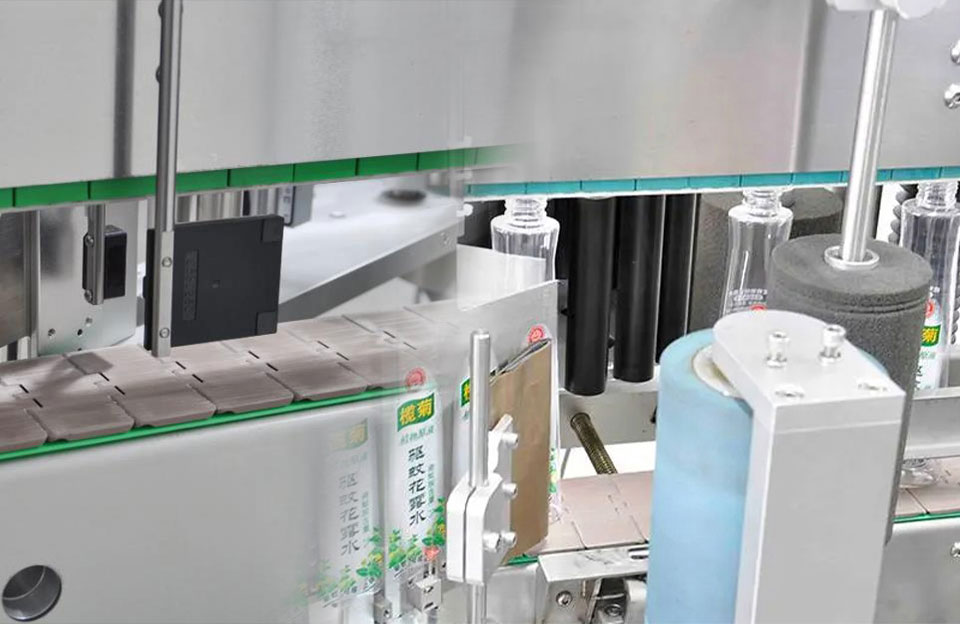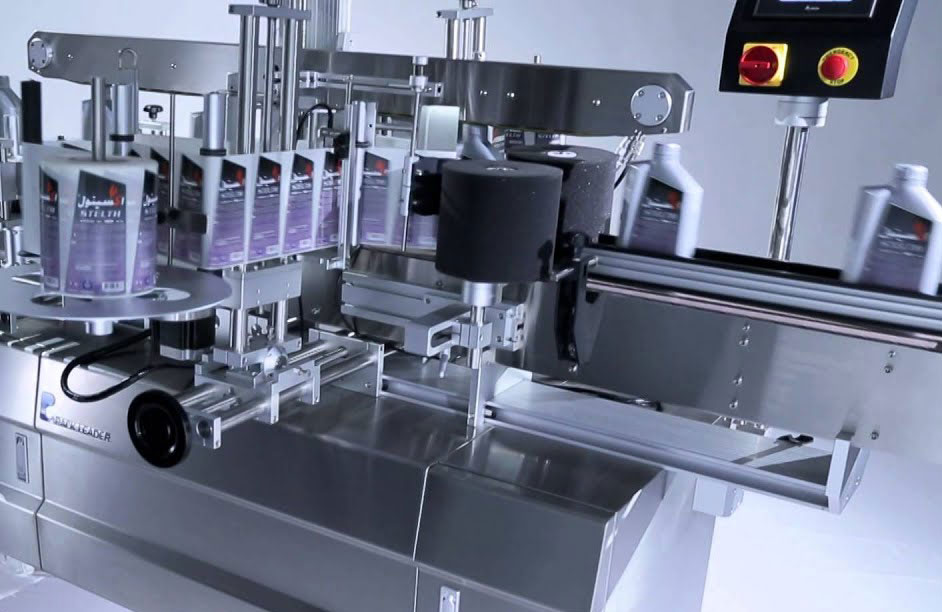Positioning-type and rolling-type labeler machines are two different types of sealer machines. They have their characteristics, and there are some differences between positioning-type and rolling-type labeler machines.
Positioning-type Labeler Machine
A positioning-type labeler machine is a specialized device used in various industries to automatically apply labels onto products or packaging. It is designed to accurately position and affix labels onto specific locations on items with precision and consistency.
The positioning-type labeler machine typically consists of a conveyor system or a mechanism that transports the products or packages to be labeled. It is equipped with sensors and mechanisms to detect the position and orientation of the items as they move along the conveyor. These sensors provide feedback to the labeler machine, enabling it to precisely position the labels based on predetermined specifications.
Positioning-type labeler machines often have advanced software and control systems that allow operators to set specific labeling parameters, such as label size, orientation, positioning accuracy, and application speed. Depending on the application’s requirements, these machines can handle high-speed labeling operations and can be integrated into existing production lines or used as standalone units.
Rolling-type Labeler Machine
A rolling type labeler machine is a specialized device used in industrial settings to automatically apply labels onto products or packaging. This type of labeler is designed to efficiently and accurately apply labels as the products or packages move along a conveyor or roller system.
The rolling-type labeler machine typically consists of a conveyor system with rollers or belts that transport the products or packages to be labeled. The labeler machine is integrated into the conveyor system, and it synchronizes its labeling process with the movement of the items.
The labeling mechanism of a rolling-type labeler machine usually involves a rotating drum or roller system. Labels are dispensed from a roll or a stack and are attached to the surface of the drum or rollers. As the items move along the conveyor, they come into contact with the labeled drum or rollers, and the labels are accurately transferred onto the products or packaging.
The rolling type labeler machines are commonly used in food and beverage, pharmaceuticals, cosmetics, and consumer goods industries. They offer benefits such as increased labeling speed, accuracy, and consistency, helping to streamline production processes and improve overall efficiency.
The Differences Between Positioning-type and Rolling-type Labeler Machine
The main differences between positioning-type and rolling-type labeler machine lie in their label application methods and the types of containers they are designed to handle. Here’s a breakdown of the distinctions:
Label Application Method:
1. Positioning-type Labeler Machine: This labeler machine focuses on accurately positioning and applying labels onto specific areas of a product or container. It typically utilizes advanced labeling mechanisms such as tamp, blow, or wipe applicators for precise label placement. It can label various parts of the container, such as the front, back, or sides.
2. Rolling-type Labeler Machine: A rolling-type labeler machine, or a wrap-around labeler, applies labels using a rolling mechanism. It wraps the labels around the circumference of cylindrical or round-shaped containers, providing a seamless and consistent label.
Suitable Container Types:
1. Positioning-type Labeler Machine: Positioning labeler machines are versatile and can handle different container shapes, such as round, square, or irregular. They can accommodate various sizes and types of containers, including bottles, jars, boxes, cans, and pouches.
2. Rolling-type Labeler Machine: Rolling labeler machines are designed for cylindrical or round-shaped containers, such as bottles, jars, cans, and tubes. They excel in applying labels to the curved surface of these containers, ensuring a snug and even label fit.
Labeling Flexibility:
1. Positioning-type Labeler Machine: These machines offer label placement and application flexibility. They can apply labels to specific container areas, allowing for targeted branding, product information, or regulatory compliance labeling.
2. Rolling-type Labeler Machine: Rolling labeler machines provide consistent, wrap-around labeling, resulting in full-surface coverage of the cylindrical containers. This creates a visually appealing, 360-degree label presentation, particularly suitable for branding.
Conclusion
In summary, there are many differences between positioning-type and rolling-type labeler machine. Positioning-type labeler machines focus on accurate label placement on various container types, while rolling-type labeler machines specialize in wrap-around labeling specifically for cylindrical or round-shaped containers. The choice between these machines depends on the specific labeling requirements, container shape, and desired label presentation for a given application.


